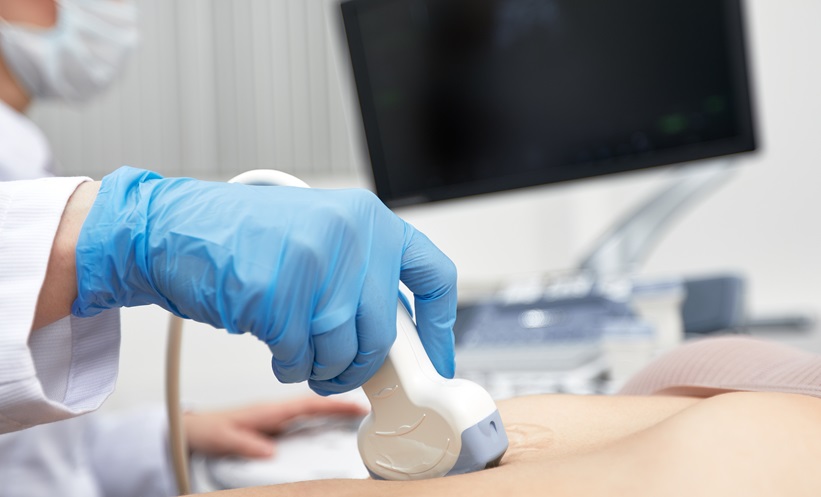The following highlights showcase late-breaking research presented at the European Association for the Study of the Liver (EASL) Congress 2025. Topics ranged from alanine transaminase testing as a screening tool for paediatric metabolic dysfunction-associated steatotic liver disease to the risks of moderate alcohol use in liver disease, and novel siRNA therapies for hepatitis B.
Citation: EMJ Hepatol. 2025;13[1]:47-54. https://doi.org/10.33590/emjhepatol/ZGDE1257
![]()
Liver Enzyme Testing Identifies Advanced Paediatric Liver Disease
A RECENT study, presented at the EASL Congress 2025, has demonstrated that alanine aminotransferase (ALT) testing is an effective method for the primary screening of advanced metabolic dysfunction-associated steatotic liver disease (MASLD) in children who are either obese or overweight with additional risk factors.1
MASLD is known to be highly prevalent in this population, yet screening remains debated due to uncertainty over the best approach and the potential risks or benefits. The study examined 322 children aged 8–18 years, who were attending obesity outpatient clinics, and divided them into four groups based on their ALT levels. Probable significant liver fibrosis was assessed using vibration-controlled transient elastography, with a threshold of ≥7.4 kPa.
Findings revealed a strong correlation between elevated ALT levels and the prevalence of significant liver fibrosis. Only 1.9% of children with normal ALT had a vibration-controlled transient elastography measurement of ≥7.4 kPa, compared to 16.4% for mild ALT elevation, 21.3% for moderate elevation, and 38.9% for those with strong ALT elevation (≥80 IU/L). The diagnostic value of ALT outperformed other non-invasive tests in this cohort. Furthermore, higher ALT (≥80 IU/L), older age, male gender, increased BMI z-score, and higher insulin resistance were all positively associated with significant fibrosis.
These results suggest that ALT, a simple and widely available blood test, can be an effective initial tool in identifying children at greater risk of advanced MASLD. As the presence of liver fibrosis in childhood can lead to serious long-term health consequences, early detection is crucial. This study supports the use of ALT-based screening in clinical practice for at-risk paediatric populations, offering a practical step forward in managing a growing public health concern.
Moderate Drinking Increases Liver Damage in Patients With MASLD
NEW research presented at the EASL Congress 2025 has revealed that low-to-moderate alcohol consumption is associated with a significantly higher risk of liver fibrosis progression in patients with metabolic dysfunction-associated steatotic liver disease (MASLD).2
The study, conducted at Hospital Universitario Vall d’Hebron, Barcelona, Spain, followed 482 outpatients with MASLD over a median period of 66 months. Patients were grouped based on alcohol consumption levels, ranging from ‘very low’ (0–40 g/week) to ‘moderate’ (91–210 g/week for men and 91–140 g/week for women), and also reclassified into Metabolic and Alcohol-Related Liver Disease (MetALD) and Alcohol-Related Liver Disease (ArLD) where applicable.
The results showed that patients in the moderate drinking group had the highest levels of liver stiffness at follow-up, with a mean value of 47.3 kPa, which was significantly higher than those in the very low group. Interestingly, low-to-moderate alcohol consumption was linked to ongoing fibrosis progression, even in patients without signs of advanced disease at baseline.
While the study found no significant differences in cardiovascular events or survival between groups, moderate drinkers had a higher, though not statistically significant, risk of new cardiovascular events. The study’s authors also highlighted the role of alcohol abstinence, noting stark differences in liver stiffness outcomes depending on whether patients remained abstinent by the study’s end, and noted that abstinence should be strongly encouraged, even in patients who appear stable.
siRNA Treatment Linked to Long-Term Immune Restoration in Hepatitis B
A STUDY presented at the EASL Congress 2025 has shown that small interfering RNA (siRNA) therapy can lead to durable immune recovery in patients with chronic hepatitis B, with significant changes in immune cell profiles observed more than 5 years after treatment cessation.3
The research team, led by Lung Yi Loey Mak from The University of Hong Kong, Hong Kong SAR of China, as well as other researchers from Queen Mary University of London, UK, analysed peripheral blood samples from 20 participants who had previously received siRNA therapy in clinical trials. Ten patients with sustained low hepatitis B surface antigen (HBsAg; <100 IU/mL; median log101.77) were compared with 10 matched patients whose HBsAg remained ≥100 IU/mL (median log102.98) at long-term follow-up.
Key immune markers differed significantly between groups. Regulatory T cell (Treg) frequency was lower in the low HBsAg group (6.47% versus 8.65%; p=0.0006). Expression of immune exhaustion markers LAG-3 and TIM-3 was also reduced across CD4+, CD8+, Treg, and B cells (p<0.05) in the low HBsAg group. Moreover, CD8+ T cells in the low HBsAg group also showed lower co-expression of PD-1 and CTLA-4 (p<0.05).
Functionally, T cells in the low HBsAg group produced higher levels of interferon-γ (CD4+ T cells) and IL-2 (CD8+ T cells) upon hepatitis B virus peptide stimulation. HBsAg levels at follow-up, but not at baseline, positively correlated with Treg frequency (r=0.531; p=0.016) and with TIM-3 and LAG-3 expression on B and T cells, while they negatively correlated with Ki-67 (r=–0.501; p=0.025) and interferon-γ production (r=–0.516; p=0.020) on CD4+ cells, suggesting that persistent antigen suppression plays a critical role in rebalancing immune function.
The findings support siRNA’s potential to induce long-term immunological improvements, paving the way for finite treatment approaches aimed at a functional cure.
Hepatitis D Screening Gaps Revealed Across Europe
A MULTINATIONAL study, presented at the EASL Congress 2025, has highlighted substantial disparities in hepatitis D virus (HDV) screening and diagnosis across Europe and parts of the Middle East, despite the virus’s known severity in liver disease progression.4
The study, conducted from 2021–2023 across 16 tertiary centres, involved 15,200 individuals with hepatitis B surface antigen positivity. Screening rates for HDV varied significantly by region, with Southern Europe showing the highest rates (79.1%), followed by the Middle East (71.5%), Northwestern Europe (59.3%), and Eastern Europe (23.9%). Of the 8,801 individuals screened, 5.9% tested positive for anti-HDV antibodies, with the highest prevalence in Romania (10.4%), Türkiye (8.7%), Germany (7.9%), and Italy (6.8%).
Among the 523 individuals with anti-HDV antibodies, 82.6% were tested for HDV RNA, revealing active infection in nearly half (46.9%) of those assessed. Alarmingly, active HDV infection was also detected in a small number (2%) of individuals who tested negative for anti-HDV, mostly from Eastern and Southern Europe, as well as Africa, raising concerns about current diagnostic reliability.
People with HDV showed significantly more advanced liver disease, higher hepatitis B surface antigen levels, and lower hepatitis B virus DNA than those with hepatitis B virus alone. Additionally, co-infection with HIV was more prevalent among HDV-positive individuals (10.8% versus 4.1%).
There were notable regional differences in both HDV RNA detection and viral load. Eastern Europe reported the highest proportion of active infections (71.6%), while the Middle East had the highest viral loads.
The study’s findings highlight the need to standardise HDV screening practices and expand access to care across Europe. Improved diagnostics and equitable treatment access are essential to addressing this underrecognised but severe viral infection.
Limited Prognostic Value of MELD 3.0 in Decompensated Cirrhosis
PRESENTED at the EASL Congress 2025, new research comparing the Model for End-Stage Liver Disease (MELD) and MELD 3.0 found only modest improvements in predicting 90-day mortality among patients hospitalised with acute decompensation of cirrhosis, highlighting limitations in their clinical utility outside transplant settings.5
Researchers analysed data from 777 patients enrolled in the ATTIRE trial, a multicentre study of individuals admitted with acute decompensation of cirrhosis. Patients receiving palliative care or with advanced hepatocellular carcinoma were excluded. Both MELD and MELD 3.0 scores were calculated at the time of trial randomisation. The prognostic performance of each model was assessed, using the Akaike Information Criterion (AIC) for model fit, C-statistic for discrimination, and the Hosmer-Lemeshow (HL) test for calibration.
The cohort had a mean age of 53.8 years (±10.6), with 29% female and alcohol-related cirrhosis as the leading aetiology (90%). The vast majority (97%) were admitted to general medical wards, predominantly for new or worsening ascites (67%), with only 10% presenting with organ dysfunction. Median MELD at randomisation was 20 (interquartile range [IQR]: 15–23), and MELD 3.0 was 23 (IQR: 18–27). Overall 90-day mortality was 24%, while liver transplant was rare (n=4; <1%). The MELD 3.0 model demonstrated a slightly higher C-statistic (0.699) than MELD (0.675), indicating marginally better discrimination. MELD 3.0 also showed improved model fit (p=0.0003), though calibration was inferior (p=0.0295) compared to MELD, which demonstrated adequate alignment between predicted and observed mortality.
Although MELD 3.0 slightly outperforms MELD in identifying patients at risk of short-term mortality, both models have notable limitations in ward-based settings with low transplant activity. Clinicians should therefore interpret these scores cautiously when discussing prognosis or making decisions about escalation or palliation.
AI Model Identifies High-Risk Liver Transplant Patients
A RECENT study from the Ajmera Transplant Centre, Toronto, Canada, presented at the EASL Congress 2025, has spotlighted the growing need for accurate tools to predict liver allograft fibrosis in transplant recipients.6
As surgical and perioperative outcomes improve, more patients are living longer with their grafts; however, this has also led to an increasing number facing fibrosis, particularly among older recipients and those transplanted for steatohepatitis. With limited clinical tools available to guide decision making, the research aimed to develop a machine learning model capable of identifying patients at the highest risk of fibrosis progression.
The study examined 1,318 liver transplant recipients with paired fibrosis measurements obtained via biopsy or transient elastography. Only extreme fibrosis stages (F0 and F4) were included to ensure higher accuracy. Researchers extracted clinical, demographic, and laboratory data from the year preceding the fibrosis assessments. Three deep learning methods were evaluated: a recurrent neural network, a long short-term memory model, and a novel temporal attenuation Gated Recurrent Unit model developed by the team.
The temporal attenuation Gated Recurrent Unit model outperformed the others, with a mean squared error of 0.61 and a Pearson’s correlation coefficient of 0.84. Performance improved further to a mean squared error of 0.28 and correlation of 0.92 when a weighted loss function was applied to emphasise data points closest to the fibrosis measurement. The five most influential variables linked to fibrosis progression were current fibrosis stage, time from transplant, donor gender, pre-transplant diabetes, and leukocyte count.
The findings highlight the potential of advanced machine learning models to support clinicians in assessing fibrosis risk non-invasively. These tools could reduce unnecessary biopsies and offer more precise monitoring, especially in settings where transient elastography is not readily available. By harnessing routinely collected clinical data, this model represents a significant step towards personalised post-transplant care.







